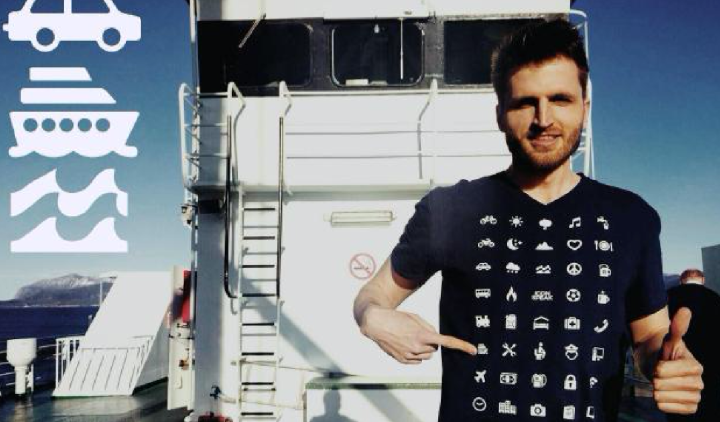
The very definition of a statement piece, Iconspeak was created by a Swiss team that recognized a need for easier methods of communication. “We came up with the idea in 2013 when we were riding motorbikes through Vietnam and one broke down,” co-founder George Horn told CNN. At the time, he and his friends used a series of flashcards bearing symbols to get their point across to the locals, and found that it was a surprisingly efficient means of communication. So of course, they turned it into a T-shirt.
“It was a long process,” Horn said. “We started with a huge list of possible items and began testing a lot of prototypes.” The 40 symbols were carefully considered to ensure that none of them could be offensive (no religious symbols are included, for example), but were all necessary and useful in day-to-day life.
“I’ve been testing them around Europe and my colleague Florian is right now using them in Latin America,” he added.
Currently available for purchase online at iconspeak.world, the shirts retail for $33 and include figures to help you talk about everything from bikes to beer to the Wi-Fi — basically, the important things in life. So if you’ve got any trips coming up, perhaps considering investing in a shirt instead of a new edition of Rosetta Stone.
Editors' Recommendations
- T-Mobile takes big 5G coverage and speed wins in new report
- Clever new language-learning app lets you practice speaking with an A.I. tutor


